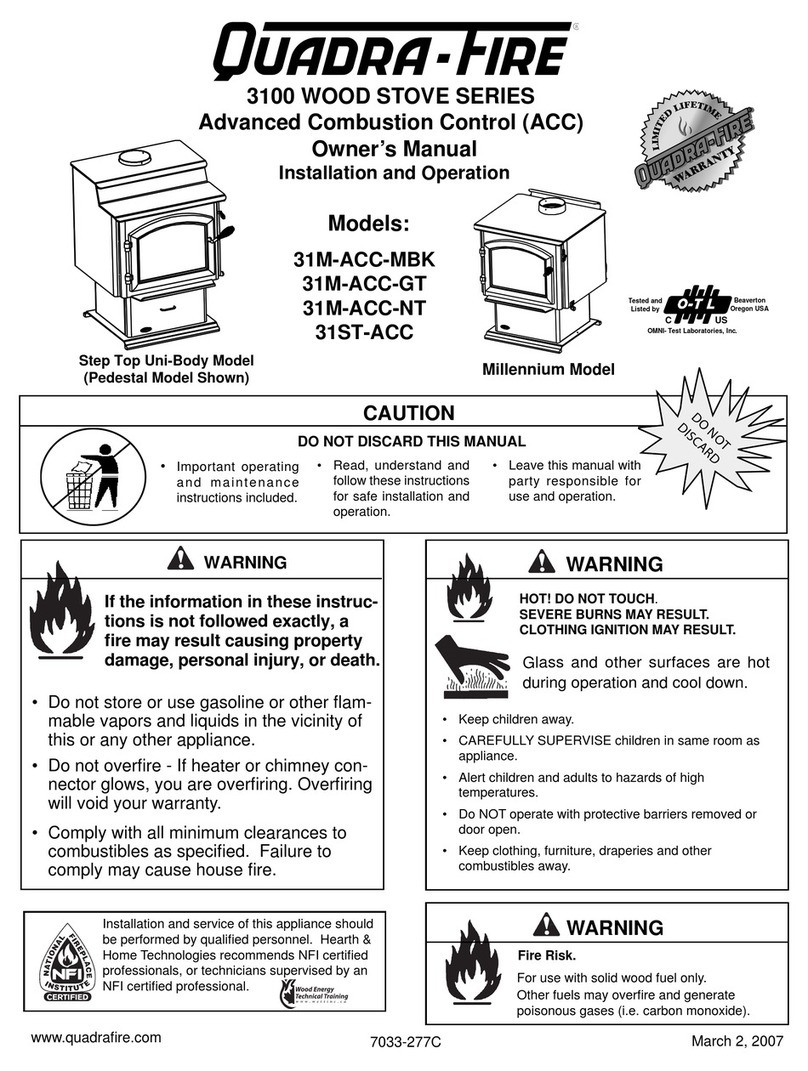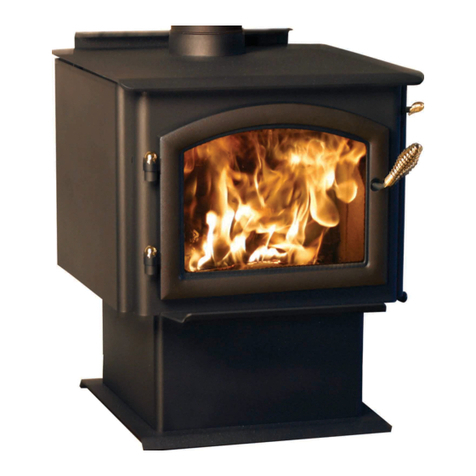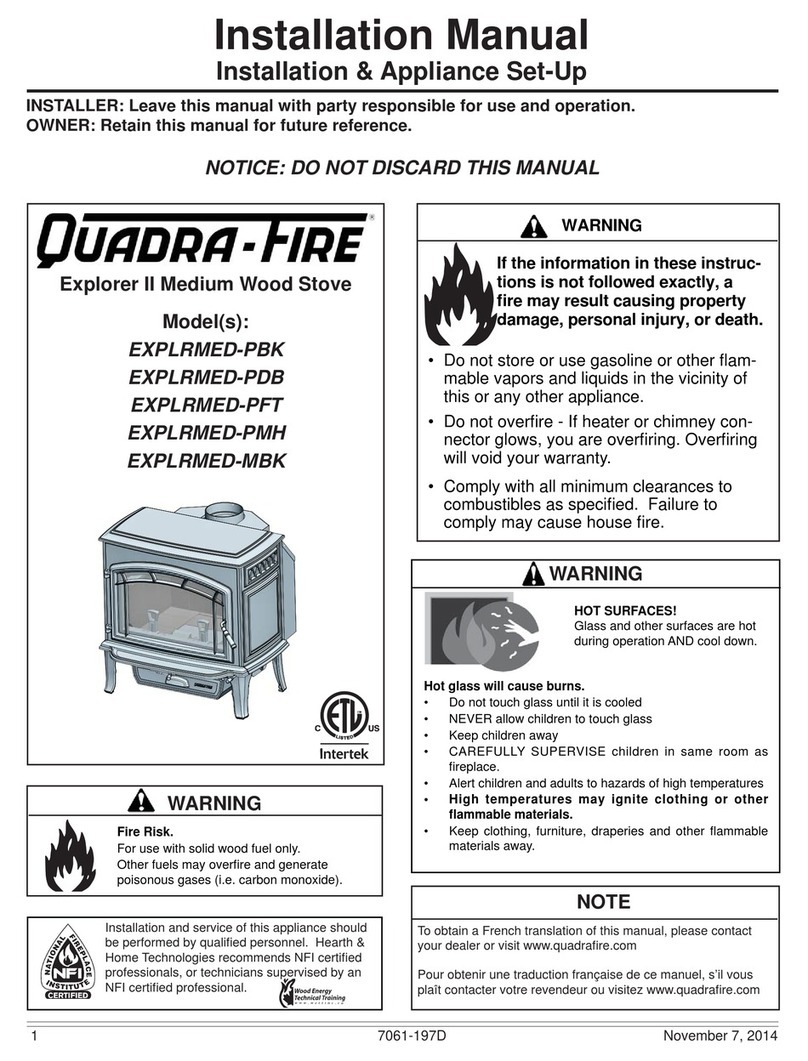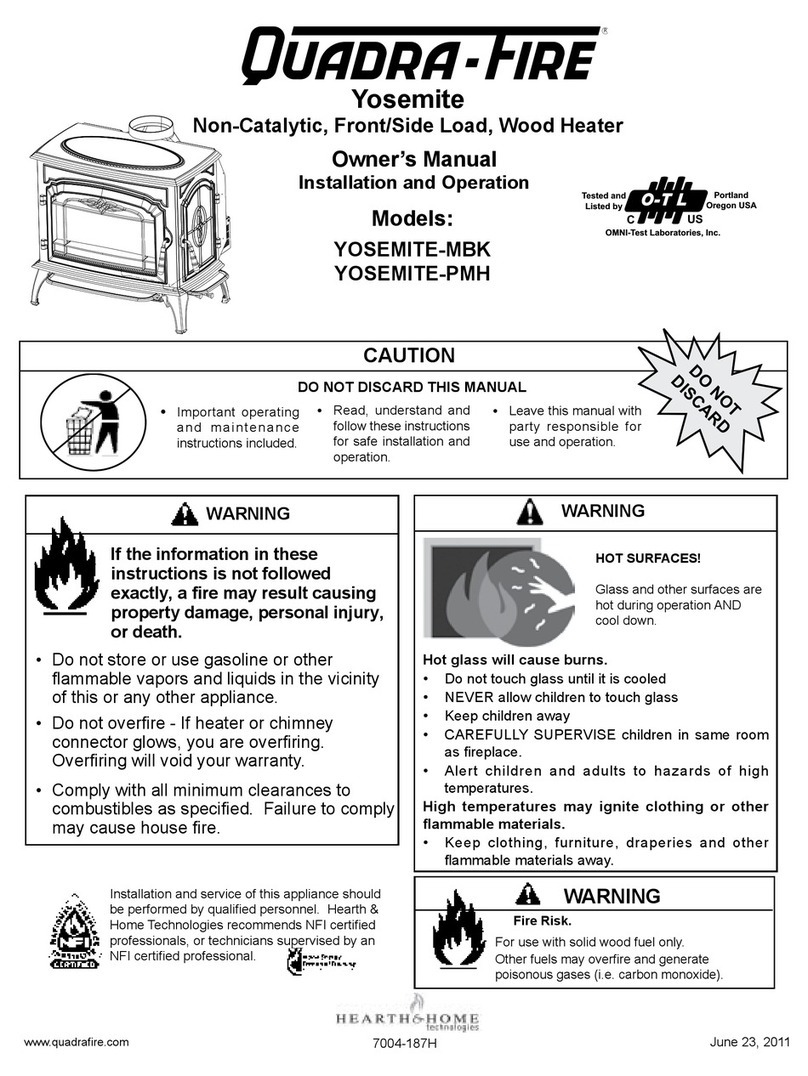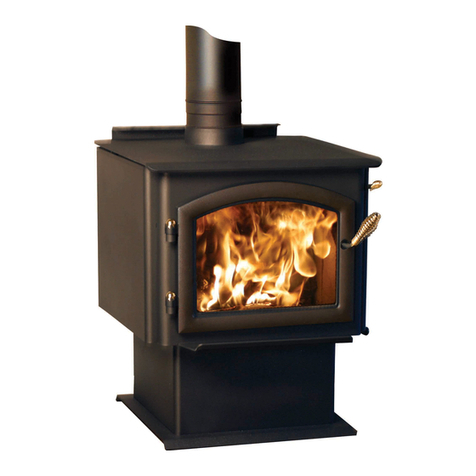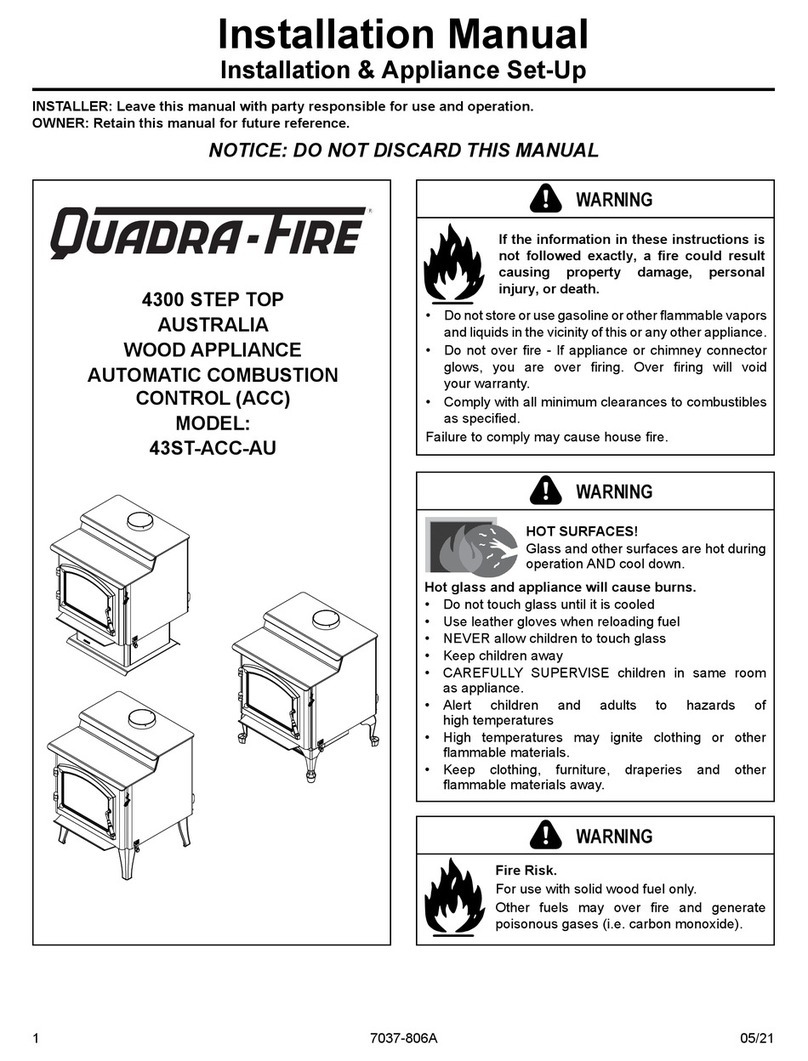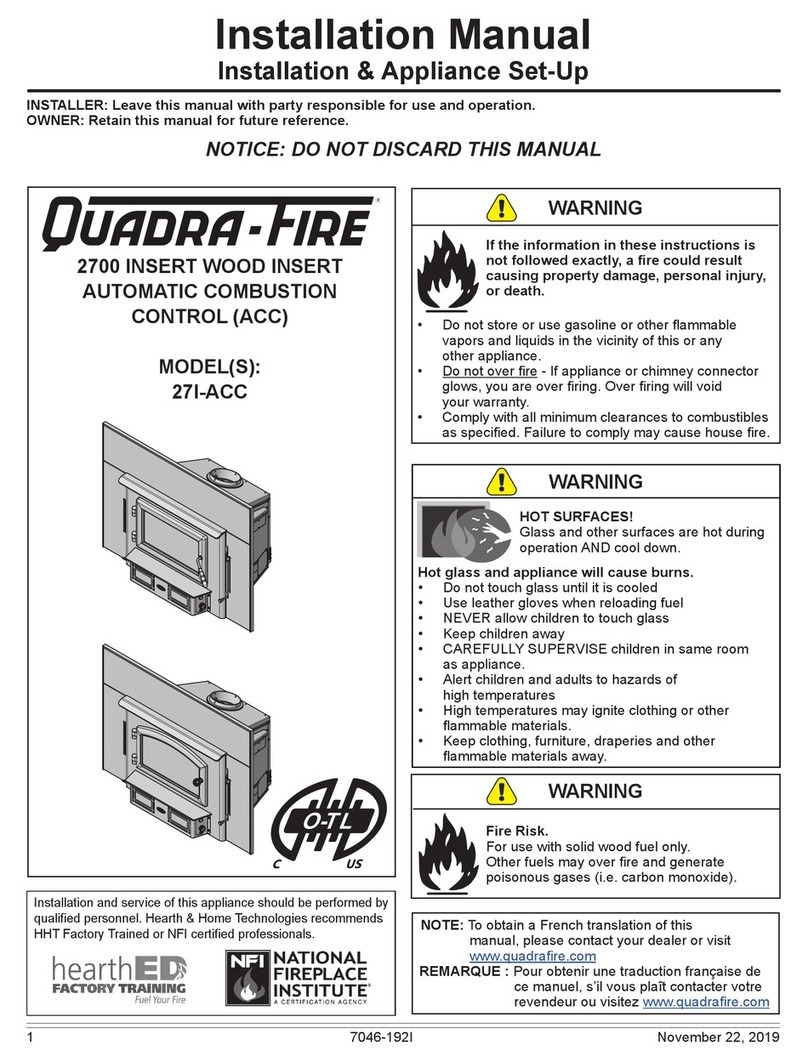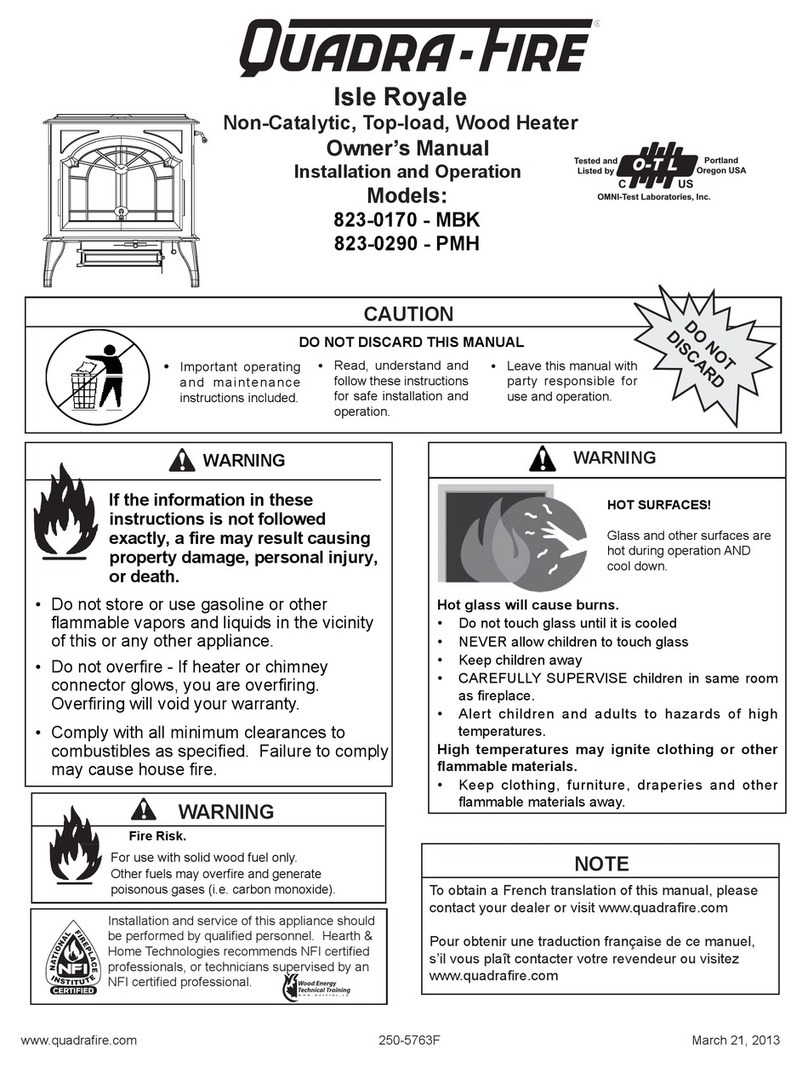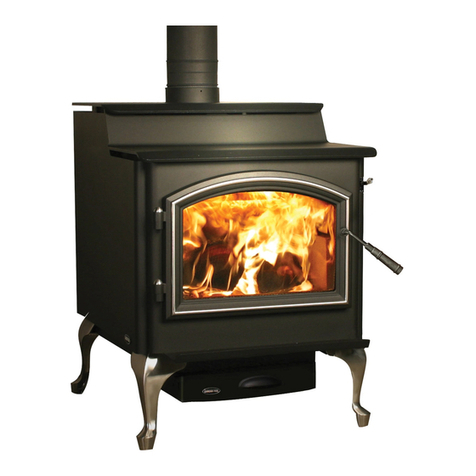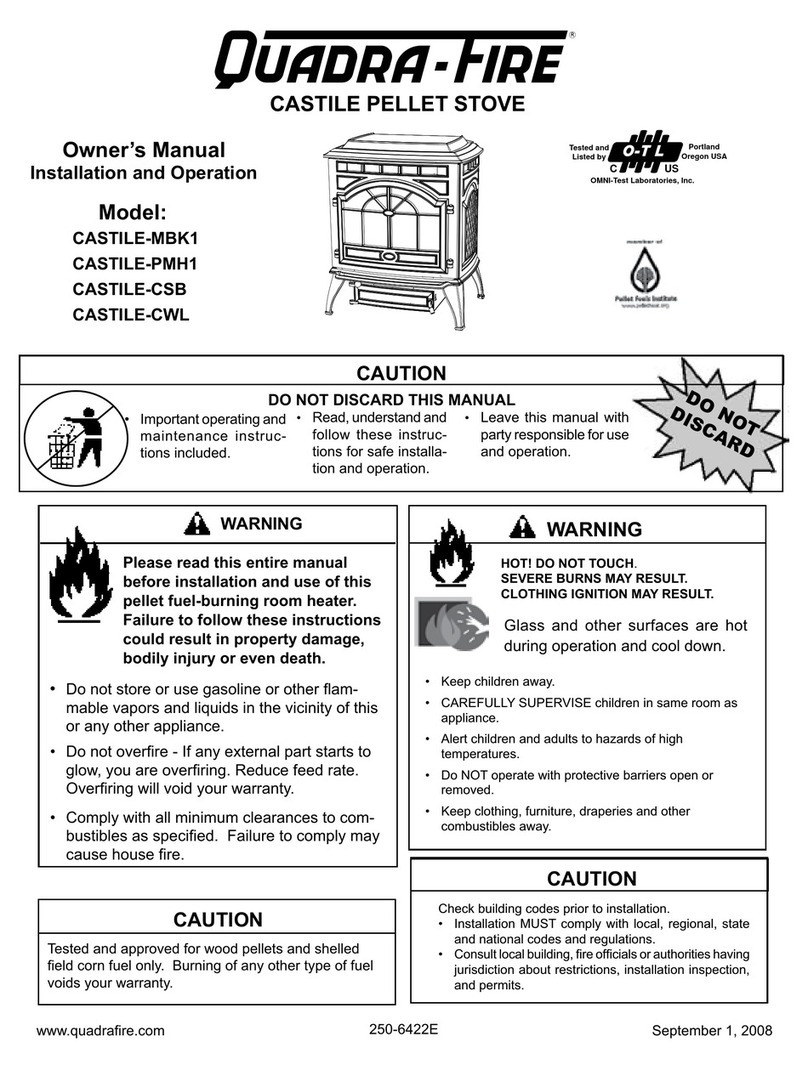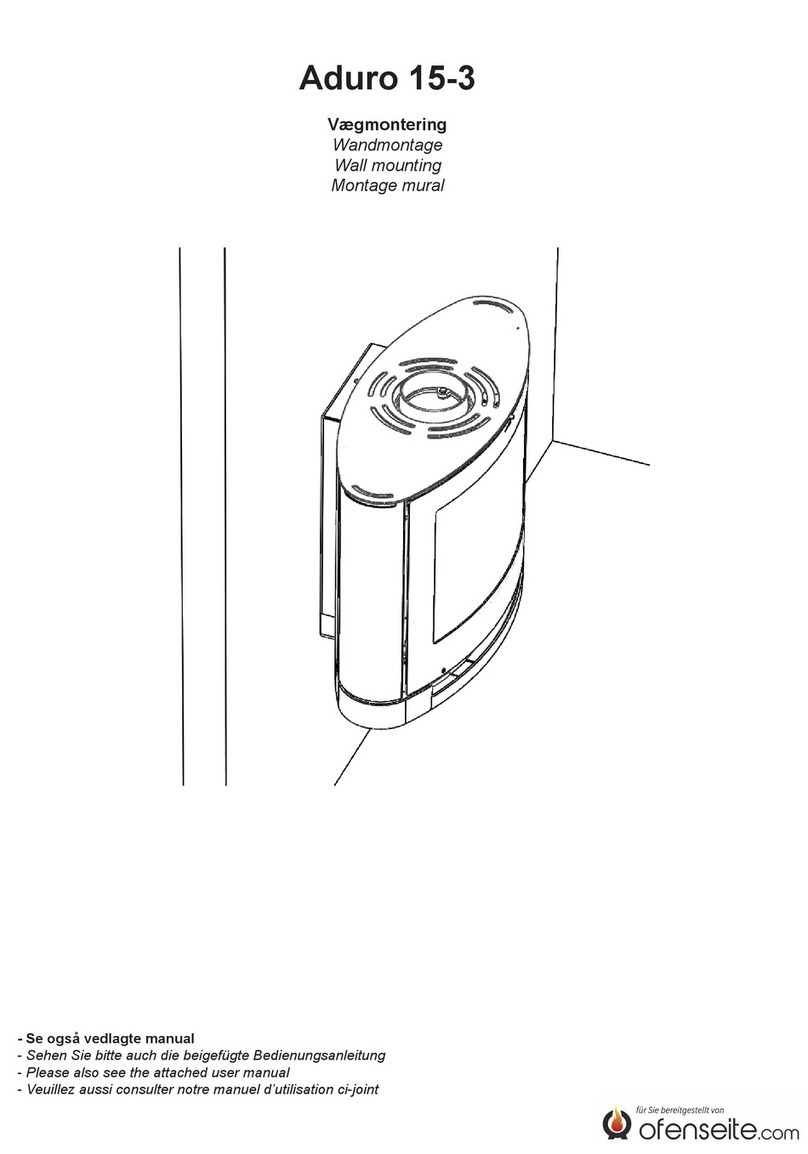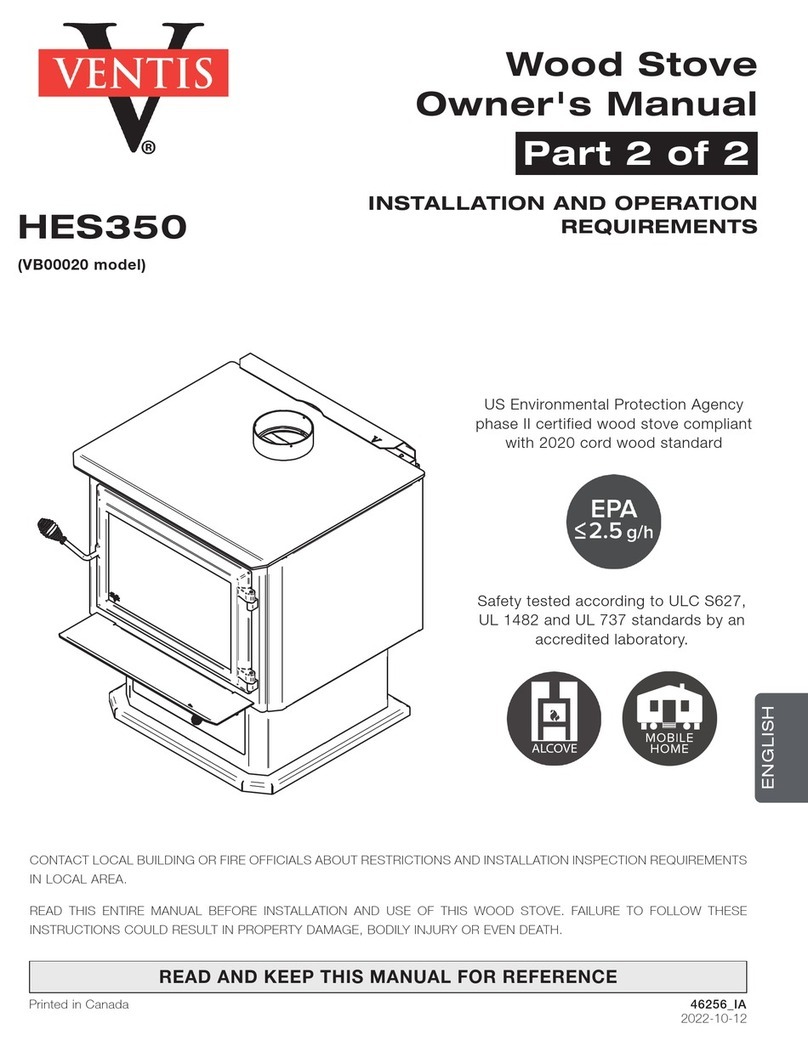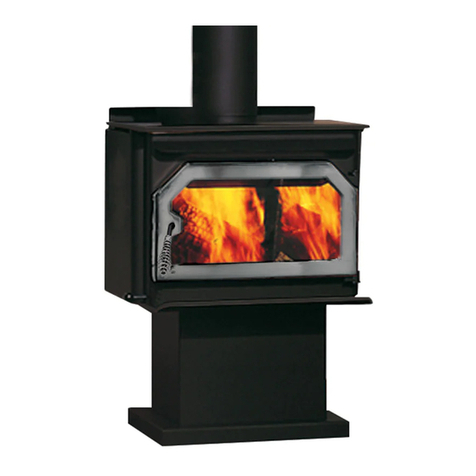
902/237037-807C
A. Over-Firing Your Appliance
1. Symptoms of Over-Firing
Symptoms of over-ring may include one or more of
thefollowing:
- Chimneyconnectororapplianceglowing
- Roaring,rumblingnoises
- Loudcrackingorbangingsounds
- Metalwarping
- Chimneyre
2. What To Do if Your Appliance is Over-Firing
- Immediatelyclosethedoorandaircontrolstoreduce
airsupplytothere.
- Ifyoususpectachimneyre,calltheredepartment
andevacuateyourhouse.
- Contact your local chimney professional and have
your appliance and appliance pipe inspected for
anydamage.
- Do not use your appliance until the chimney
professionalinformsyouitissafetodoso.
B. Wood Selection & Storage
Burn only dry seasoned wood. Store wood under cover,
outoftherainandsnow.Dryandwell-seasonedwoodwill
notonlyminimizethechanceofcreosoteformation,butwill
giveyouthemostefcientre.Evendrywoodcontainsat
least 15% moisture by weight, and should be burned hot
enoughtokeepthechimneyhotforaslongasittakesto
drythewoodout-aboutonehour.Itisawasteofenergyto
burnunseasonedwoodofanykind.
Hearth & Home Technologies WILL NOT warranty
appliancesthatexhibitevidenceofover-ring.Evidence
ofover-ringincludes,butisnotlimitedto:
• Warpedairtube
• Deterioratedrefractorybrickretainers
• Deterioratedbafeandotherinteriorcomponents
22 Operating Instructions
Fire Risk. Do not over-re.
Over-ringmayignitecreosoteorwilldamage
theapplianceandchimney.
WARNING
Topreventover-ringyourappliance,DONOT:
• Useammableliquids
• Overloadwithwood
• Burntrashorlargeamountsofscraplumber
• Permittoomuchairtothere
Deadwoodlyingonthe forestoorshouldbeconsidered
wet,andrequiresfullseasoningtime.Standingdeadwood
canbeconsideredtobeabout2/3seasoned.Totellifwood
isdryenoughtoburn,checktheendsofthelogs.Ifthere
arecracksradiatinginalldirectionsfromthecenter,itisdry.
Ifyourwoodsizzlesinthere,eventhoughthesurfaceis
dry,itmaynotbefullycured.
Splitting wood before it is stored reduces drying time.
Woodshouldbestackedso thatbothendsofeachpiece
are exposed to air, since more drying occurs through the
cutends than the sides.This is true even with wood that
hasbeensplit.Storewoodundercover,suchasinashed,
or covered with a tarp, plastic, tar paper, sheets of scrap
plywood,etc.,as uncoveredwoodcanabsorbwater from
rainorsnow,delayingtheseasoningprocess.
C. Burning Process
In recent years there has been an increasing concern
about air quality. Much of the blame for poor air quality
hasbeenplacedontheburningofwoodforhomeheating.
In order to improve the situation, we at Quadra-Fire
have developed cleaner-burning wood appliances that
surpasstherequirementsforemissionsestablishedbyour
governingagencies.Thesewoodappliances,likeanyother
appliances, must be properly operated in order to insure
that they perform the way they are designed to perform.
Improperoperationcanturnmostanywoodapplianceinto
asmolderingenvironmentalhazard.
1. Kindling or First Stage - Ithelpstoknowalittleabout
theactualprocessofburninginordertounderstandwhat
goesoninsideaappliance.Therststageofburningis
calledthekindlingstage.Inthisstage,thewoodisheated
toatemperaturehighenoughtoevaporatethemoisture
which is present in all wood. The wood will reach the
boilingpointofwater(212°F)andwillnotgetanyhotter
until the water is evaporated. This process takes heat
fromthecoalsandtendstocooltheappliance.
Firerequiresthreethingstoburn-fuel,airandheat.So,
if heat is robbed from the appliance during the drying
stage,the newloadofwoodhas reducedthechances
foragoodcleanburn.Forthisreason,itisalwaysbest
to burn dry, seasoned rewood. When the wood isn’t
dry,youmustopen the aircontrolsandburnat a high
burn setting for a longer time to start it burning. The
heat generated from the re should be warming your
home and establishing the ue draft, not evaporating
themoistureoutofwet,unseasonedwood,resultingin
wastedheat.


